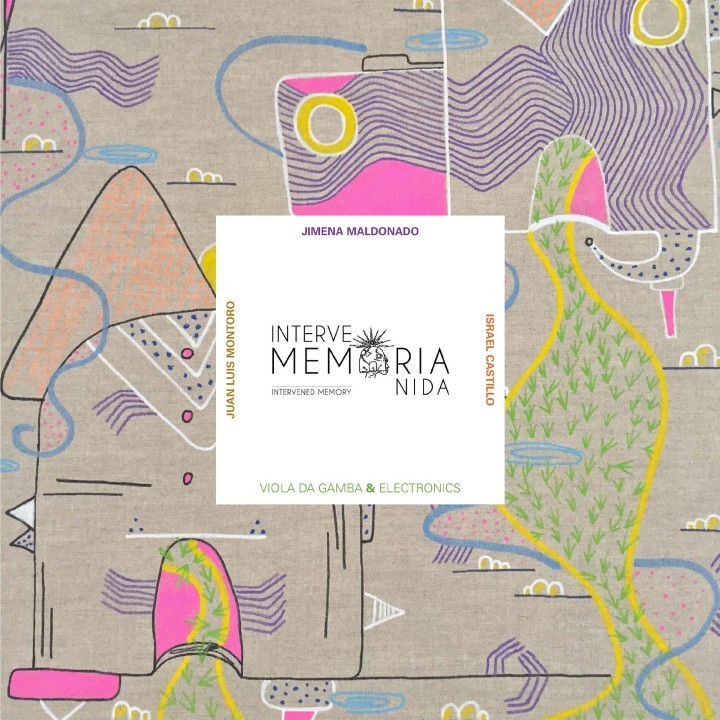Intervened Memory 1
6th October 2022
Articles Birmingham Record CompanyJimena Maldonado uses her experience as a photographer to experiment with the relationship between music and visual elements. Her new album, Intervened Memory (due to be released 28 October) is based on a poignant series of photographs taken in Juchitán, Oaxaca, Mexico after a catastrophic earthquake. Here, sociologist Pascale Naveau explores the way that music and image interact and influence each other in the work, and how this relationship affects the perceptions of both performer and audience.
On 7 September 2017 at 11:58pm, the Isthmus of Tehuantepec in southern Mexico was devastated by an earthquake measuring 8.2 on the Richter scale. The most striking fact, and probably the most serious and traumatic, is that this earthquake was distinguished by its interminable three-minute duration. Like the music on the album Intervened memory, this earthquake was divided in several moments, in different rhythms with different emotions and intensities, whose last movements, called the aftershocks, still shook the population four weeks later.
In 2022, five years after the catastrophe, the release of the album Intervened memory identifies the emotional evolution of the victims of the earthquake who, despite moving on, still feel the emotions of the earthquake as if it were yesterday. The earthquake left its mark on an entire generation and the scars will still be visible decades from now. To accompany these emotions and scars, artists Jimena Maldonado (composer), Juan Luis Montoro Santos (composer and performer) and Israel Castillo Hernández (gamba player) have joined their respective sensibilities and talents to create the work Intervened memory.
Like the music on the album Intervened memory, this earthquake was divided into several moments, in different rhythms with different emotions and intensities
As a result of the disaster, hundreds of houses and buildings were destroyed. Thousands of people were living in the streets with the ruins of their destroyed houses as a backdrop. The project Yo Soy mi Casa, by visual artist Cristian Pineda, was born as a reaction to the uprooting caused by the earthquake, which devastated more than half of the houses and buildings in Juchitán, the artist's hometown. After the massive destruction of his village, his family home, his mother's house and the houses of countless friends, relatives and neighbours, Cristian Pineda managed, despite the humanitarian crisis, to take photographs of the apocalyptic environment facing him, his family and his loved ones.
Once out of the crisis situation, the artist returns to his photographs and aims to highlight the loss of one’s home due to natural disasters. The work Yo Soy mi Casa consists of photographs of destroyed houses on which Cristian Pineda has drawn imaginary houses. His intention is to re-imagine villages, houses, homes and life after disaster. Ultimately, it is about repopulating his imagination in a space-time between what no longer exists and what will exist.
Through this series, the artist once again confronts the subject of migratory displacement through climate migration. Climate change is today one of the most important reasons for the exodus of entire peoples around the world. This earthquake caused 104,000 climate migrants in Mexico at the time.
It was also within the framework of migratory movements that Cristian Pineda's art met with that of the artist-composers Jimena Maldonado Álvarez, Juan Luis Montoro Santos and the gamba player Israel Castillo Hernández. Intervened memory is the result of this encounter, in which Jimena Maldonado's sensitivity translates Cristian Pineda's drawings into musical notes. Each of the ten drawings in the series Yo Soy mi Casa is accompanied by a piece of music. Jimena Maldonado's work was enriched by the collaboration with Spanish composer Juan Luis Montoro Santos and the talent of Mexican gamba player Israel Castillo Hernández. Intervened memory is the result of different processes of intervention, dialogue, interpretation and improvisation between the three artists; all based on the work of Cristian Pineda. The interaction between the composers, the performer, the images and the electronics is an essential part of the creation, the presentation and, undoubtedly, the audience’s perception of the work.
The interaction between the composers, the performer, the images and the electronics is an essential part of the creation, the presentation and, undoubtedly, the audience’s perception of the work
Together, the piece of music and the graphic work have a double weight on the human body of the audience that faces them. The artists' intention was to compose a piece in which visual and musical elements combined and thus to create a unique audio-visual experience, which will speak to all of us, and will touch our visual and auditory sensibility.
Ravet explains through the thoughts of several authors the relationship between music and time in an exemplary way: "Music has a special relationship with time (Imberty, 1981). All music creates a specific time, a duration, both inside and outside common time, which allows us to suspend the thread of chronometric time, to reconnect with other temporalities (Prévost-Thomas, 2002), to "tune in" to others (composers or listeners) (Schütz, 2007), to share intense emotions together. As a temporal and symbolic domain of time, music weaves a link between individuals, opens a shared window and confronts life and death, the human condition and human becoming, and the capacity to engender and create" (Ravet, 2010: 274).
Intervened memory is part of a symbolic and temporal domain of time insofar as the project is a musical, visual, and collective memory of the earthquake that shook the Isthmus of Tehuantepec on the night of 7 September 2017. Five years after the catastrophe, the release of the album allows us to highlight the passage of time, but also to highlight the time that has stood still for some of the families who, to this day, have not been able to rebuild a home. Intervened memory is also a testimony, a collective memory for the people of the Isthmus, which allows us to accompany these inhabitants through time and generations. To return to Ravet, the project Intervened memory succeeds in taking us through the prism of emotions to a moment of crisis, and little by little, it opens emotional and reflective windows onto a human growth that is located between trauma and the reconstruction of something which was already fragile.
Text by Pascale Naveau, translated from Spanish by Jimena Maldonado.
Intervened memory is out on 28 October on Birmingham Record Company
Find out more about Jimena Maldonado's unique work combining photography and composition here
NMC's Discover platform is created in partnership with ISM Trust.

